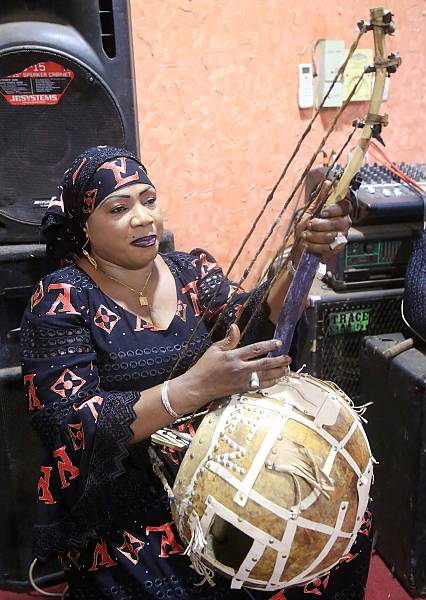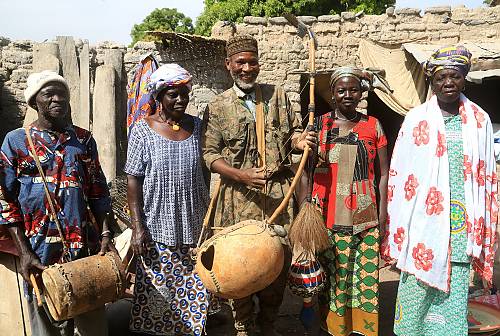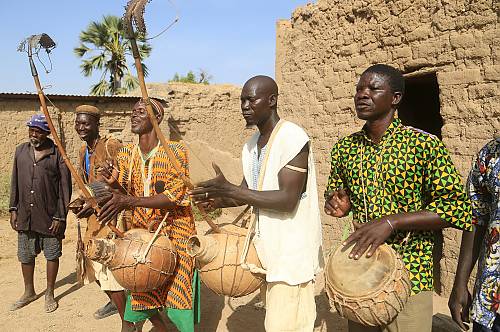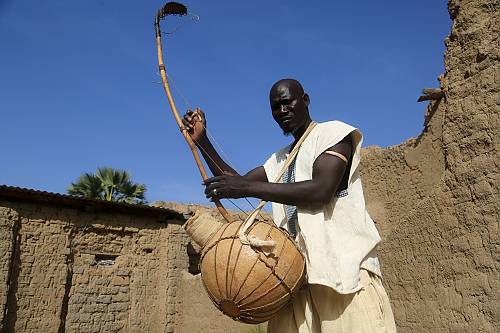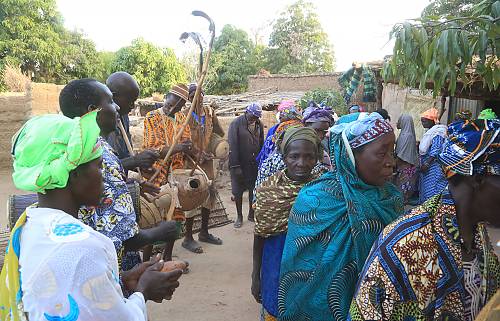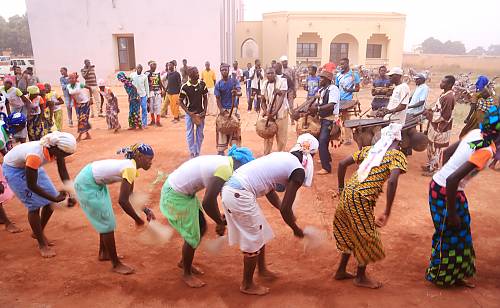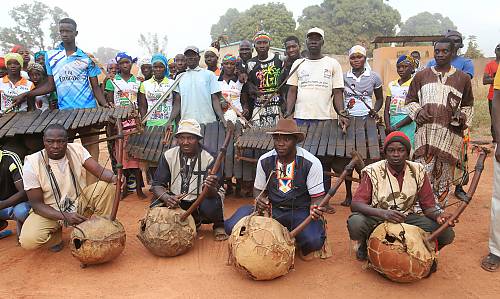Cultural practices and expressions linked to the 'M’Bolon', a traditional musical percussion instrument
Inscribed in 2021 (16.COM) on the List of Intangible Cultural Heritage in Need of Urgent Safeguarding
The M’Bolon is a musical instrument with a large calabash sound box covered with cowhide and a bow-shaped wooden neck with strings. To amplify the sound vibrations, the player often wears a bell-like device made of metal plates with small oval-shaped lobes. This device is fitted with small iron rings and attached to the player’s hand by means of a pad with cords or an elastic band. The number of strings of the M’Bolon determines how it is used. Single-stringed and two-stringed M’Bolon are used for popular events and celebrations, as well as for rituals and religious ceremonies. Three-stringed and four-stringed M’Bolon are the most common. They are used to accompany the praising of traditional chiefs, celebrate the heroic deeds of kings, accompany farmers in the fields and rouse warriors. The M’Bolon can be played on its own or with other instruments, including the xylophone, talking drum and lutes. It is played in southern Mali by people of all ethnicities, genders and religions, and is taught through apprenticeships and by local associations. However, there is a limited number of initiates, and the practice is threatened by factors such as urbanization, the introduction of religions that prohibit traditional initiatory rites and practices, and decreasing interest among youth.


